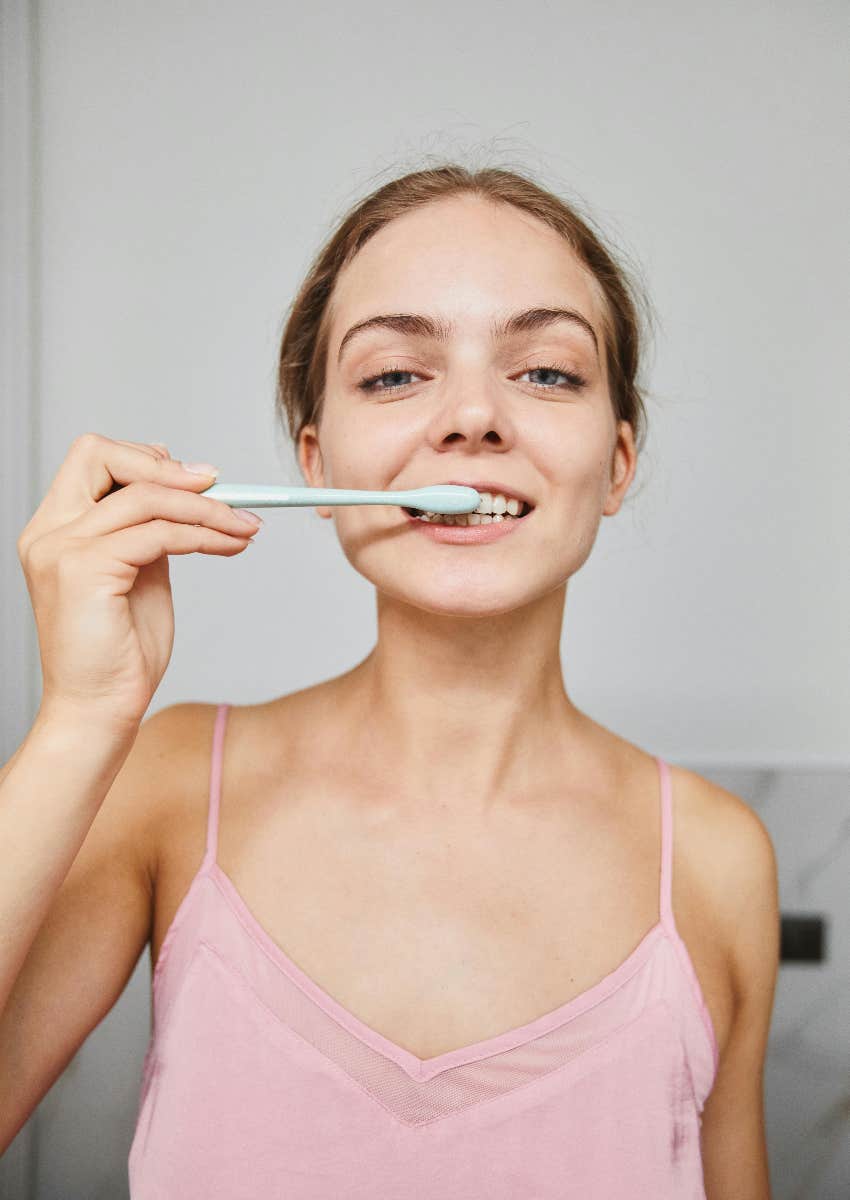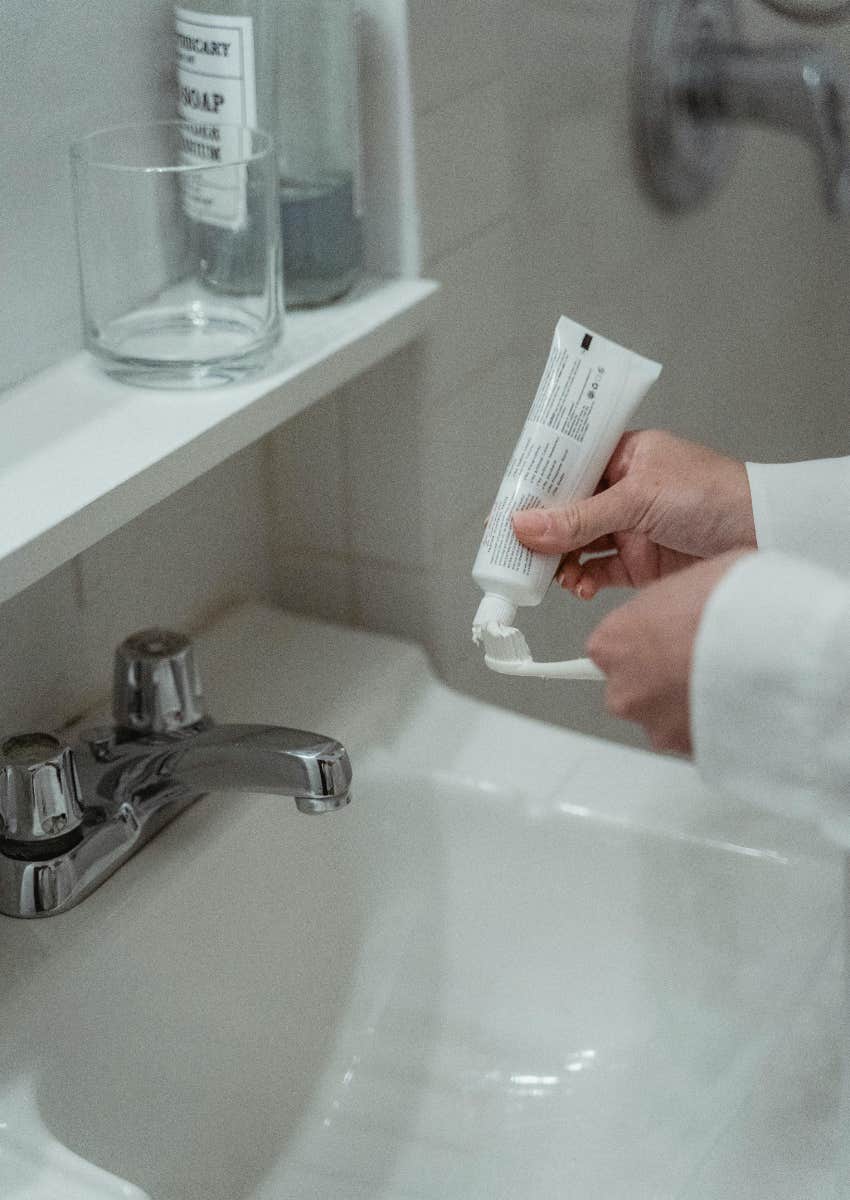This One Thing You Use Everyday Is Dirtier Than A Man's Bathroom, Finds Study
This information may have you rethinking your cleaning habits for a lot of things.
 Polina Zimmerman | Pexels
Polina Zimmerman | Pexels Few things are quite as frightening as entering a man’s bathroom. It seems like any human instinct that tells a guy to clean has completely gone out the window. This certainly doesn’t mean all men are slobs, but the way they clean their bathrooms just leaves something to be desired.
I’m going to go out on a limb and say that you probably wouldn’t touch most surfaces in a guy’s bathroom without washing your hands after, and you certainly wouldn’t let your hands go anywhere near your mouth after touching those surfaces. The unfortunate news is that you actually do this with something you use daily that is even dirtier than a man’s bathroom.
A study found that your toothbrush is probably dirtier than a man’s bathroom.
Risas Dental conducted a study that really went deep into the science behind how much bacteria could be found on your toothbrush to figure out what’s really there, and on the surfaces around it. They performed an ATP bioluminescence test to determine how much adenosine triphosphate, which they defined as “a molecule found in and around living cells,” was present on various toothbrushes, as well as some different bathroom surfaces.
 Marcus Aurelius | Pexels
Marcus Aurelius | Pexels
They were looking for the levels of Relative Light Unit, or RLU, on each thing they tested. A higher amount of RLU means something is dirtier. Basically, they went full-on crime scene investigation mode on people’s toothbrushes and bathrooms. And, a crime scene might really be an apt way to describe it, given their findings.
The acceptable RLU range is between 20 and 60. The average woman’s toothbrush had 295.5 RLU, with some toothbrushes coming in lower at 80 RLU, and others higher at 3,837 RLU. For once, something men used was actually cleaner, with their toothbrushes averaging at 202.2 RLU. However, two of the men’s toothbrushes they examined had 3,248 and 4,635 RLU, respectively.
Comparing this to the RLU measures for bathrooms was concerning, to say the least.
It’s no surprise to anyone that a woman’s bathroom was found to be cleaner than a man’s. The woman’s measured 97.2 RLU, while the man’s was a significantly higher 396.4 RLU. Yes, that’s right, many of the toothbrushes tested had higher RLU readings than an actual man’s bathroom.
Dr. Sham Singh of the WINIT Clinic offered some perspective on those numbers. “Toothbrushes and their environments are clearly well outside the cleanliness thresholds,” he said. “This means that, unknowingly, people might be exposing themselves to bacteria every time they brush.”
Dr. Singh went on to say that this can cause a whole host of issues. For example, bacteria on a toothbrush can contribute to gum disease, cavities, and infections. He said that storing an already dirty toothbrush in a dirty bathroom is also a problem, as this can make toothbrushes even dirtier and cause illnesses to spread.
We all know you can clean your bathroom, but you can actually clean your toothbrush, too.
You use your toothbrush to clean your teeth, but you probably don’t think about cleaning it. After all, isn’t a quick rinse after brushing enough? Experts say that’s a good place to start, but you have to do more. Writing for WebMD, Sharlene Tan explained that you can use a 3% hydrogen peroxide solution to clean a toothbrush or soak it in antibacterial mouthwash. Denture cleaners are another option.
 Miriam Alonso | Pexels
Miriam Alonso | Pexels
And, of course, you’ve got to replace your toothbrush regularly. (Or, if you use an electric toothbrush, be sure to replace the head.) Colgate said that toothbrushes should be replaced every three to four months, but more frequently if you get sick or the bristles begin fraying.
The numbers from this study may feel overwhelming, but that doesn’t mean you should panic or start using a new toothbrush each day. Just remember, keep your bathroom clean, always close the toilet seat before flushing, wash your toothbrush and change the toothbrush or toothbrush head regularly.
Mary-Faith Martinez is a writer with a bachelor’s degree in English and Journalism who covers news, psychology, lifestyle, and human interest topics.

